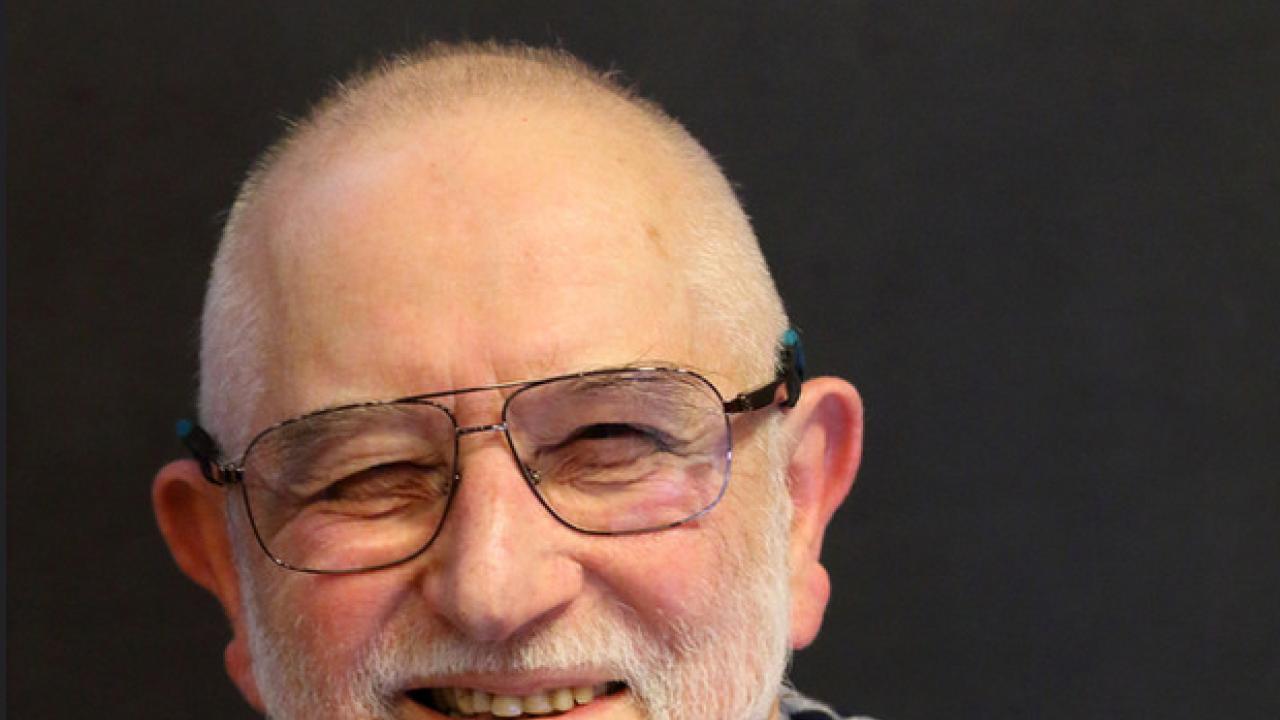
Sir Michael Berry—self-described “dreamer and scribbler, of mathematics, mostly”—recently delivered a set of talks on superoscillations and wave physics for ICTP’s annual Salam Distinguished Lecture Series. His presentations had their fair share of mathematics, but also included many of Berry’s “scribbles”, colorful graphics generated from equations describing wave intensities.
“I like physics that you can see, natural phenomena,” admits Berry, during an interview held between his Salam lectures. Indeed, Berry has a name for his art—“eyemath”—that has evolved from the blackboards of Bristol University, UK, where he has been lecturing and drawing formulas for more than 50 years.
“A lot of time in physics you deal with mathematics that you just can’t work out only using formulas,” explains Berry. “When you make pictures, you can see into the math. This helps us to understand the content of the mathematics, and it helps communicate with colleagues and with people who are not scientists.”
In the interview, as well as behind the lectern, Berry exudes warmth and friendliness, as well as a keen sense of humor. During his first Salam Distinguished lecture he relates how, after thinking for years about a paradox presented to him by Yakir Aharonov, he has the epiphany that he had sensed the ideas behind the paradox years before it was presented to him.
“I have a name for these moments of sudden understanding,” he quips, “It is my contribution to elementary particle physics: what is the elementary particle of sudden understanding? It’s the clariton! In an instant, something becomes clear.” The flip side to that, Berry jokes, are the anti-claritons, that often come and annihilate the claritons.
It was a search for clarity that led Sir Michael to physics and mathematics in the first place. As a child, he was fascinated with astronomy, a gateway field for many future physicists. “I came to realize that underneath the astronomy was physics and maths. I studied physics at university, but found I was really clueless about the mathematics; somehow, though, it came naturally,” Berry explains. He adds, humbly, “It was a long time before I dared to admit that I was a physicist.”
Berry says he was honoured that ICTP invited him to deliver the Salam Distinguished Lecture Series, which is held every year on or near the ICTP founder’s 29 January. Although Berry never collaborated scientifically with Abdus Salam, he did meet him on several occasions, including in 1995 when Berry came to ICTP to receive its Dirac Medal.
Sir Michael holds great admiration for Salam, not only for his science but also for his humanitarian side. “He is a good example of the fact that science crosses national and cultural borders, which is the whole message of ICTP,” says Berry, adding, “Whether you come from Asia or Africa, when you talk about physics, it is the same, and that’s a lovely thing. Because it is about nature, about the underlying concepts that make the natural world what it is, and that is really independent of us. It doesn’t depend on which culture we come from. Salam exemplified that.” Berry was also impressed by Salam’s impressive record for creating science institutes: “He was a mover and a shaker, he made things happen.”
Science’s culture-blindness has perhaps contributed to a curious protocol for scientific dialogue. Berry notes, “We’ve learned a strange trick as a community: how to disagree without being disagreeable. You can go to a scientific meeting and disagree with a presentation, but it is not hostile, it is a productive form of disagreement. I think this is something the world needs.”
One is left with the impression from his frequently lighthearted presentation style that Berry thinks the world also needs levity; or, in the case of his work with Nobel Laureate Andrey Geim, levitation. The two shared the 2000 Ig Nobel Prize in Physics for their flying frog experiment, which, while amusing on the surface, demonstrated some serious scientific principles about magnetism. Berry and Geim saw the award as an opportunity to educate the public about science. In a press release they issued on acceptance of the prize, they said, “We are pleased to accept the Ig prize because we have always considered it a duty to make physics more understandable and bring it closer to nonscientists.”
The two end their release with the statement, “Let there be more science with a smile”. For Berry, this philosophy underpins his science. “It’s what I do most of the time, so why not enjoy it?”
--Mary Ann Williams
















